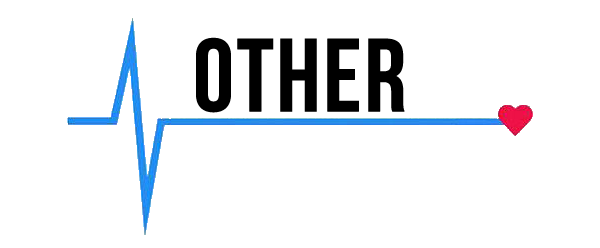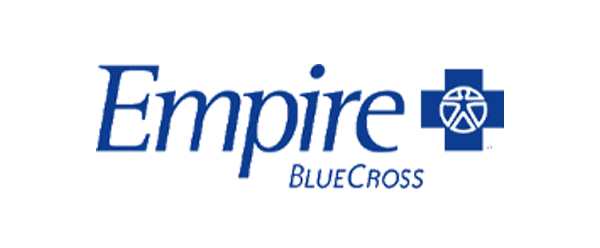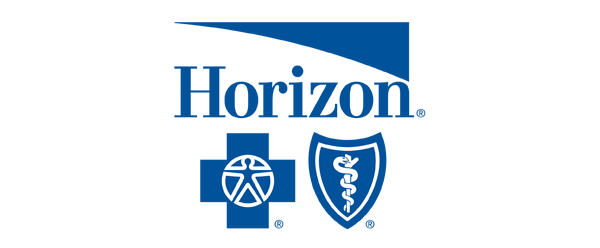Let’s bring today’s mail order sleep test conversation full circle by noting that people, especially kids and teens, are spending more time sitting than ever. These habits have led to a rise in health problems, such as a growing obesity crisis and an increase in sleep apnea, which is often caused by extra weight.
Beyond weight, stressful jobs and shift work disrupt normal sleep schedules, and juggling a career with family life leaves little time for self-care. Because of these challenges, quick and easy health options have become a necessity for survival rather than a luxury.
For older generations, like Boomers and those before them, health was seen as a way to fix problems after they happened. They visited doctors after getting sick, with little focus on preventing illness. Mental health was also often pushed to the side.
However, things have changed significantly for younger generations, who use new technology to shape their view of health. They see a strong connection between the body, mind, and even dental care. There’s a greater emphasis on overall well-being, with many searching for advice tailored to their personal data rather than generic tips.
These shifts are evident in how medical fields are now collaborating, rather than working separately. For example, dentists now suggest sleep testing for patients, which was once an area left to other doctors. These changes show how new ideas are transforming health care at every level.
Health Care System and Mail Order Sleep Test Questions
Sleep disorders affect millions of Americans, straining hospitals to their limits, forcing many patients to look into a mail order sleep test. Around 50 to 70 million people deal with some type of sleep issue, with obstructive sleep apnea being one of the most severe problems.
This condition affects approximately one in three men and nearly one in five women. Modern habits, such as a more sedentary lifestyle, have contributed to this issue by fueling the rise of obesity, diabetes, and high blood pressure.
Despite the high prevalence of these disorders, getting a diagnosis isn’t easy. The number of people who need help far outweighs what labs can handle, and hospitals are struggling to keep up with the growing older population and tighter budgets.
Increased awareness of how sleep problems impact health is driving the search for better solutions. Mail-order sleep tests have changed the game, with at-home testing allowing people to get a diagnosis faster without waiting for a lab appointment. This new technology offers a lifeline, making care more personal and helping doctors spot problems early.
By bringing testing into the home, these tools ease the burden on overwhelmed clinics, enabling doctors to do more for each patient. While the search for fresh answers continues, technology offers real hope for those desperate for a good night’s rest.
The Digital Divide in Health Care
People from earlier generations often prefer familiar health care routines, with many older adults trusting long-standing, face-to-face relationships with their doctors. For this age group, using technology for health often feels foreign, as new digital tools can seem more confusing than helpful.
A 2022 study revealed significant gaps, showing that almost half of people over 65 couldn’t complete basic online safety steps. Many are hesitant to adopt things like telehealth due to concerns about privacy, shaky security, and the prevalence of fake information online.
Despite these concerns, the trust older adults have in their doctors runs deep. While they might research health topics online, it almost never replaces a conversation with a professional.
The early days of COVID-19 showed that this group can adapt to new technology. The need for remote care pushed many older adults online, and with help from their usual doctor, the shift was possible.
For at-home medical tests to gain traction, clear support from trusted providers is key. Providers must explain how these options work and give honest answers about security concerns. With the right guidance, this group is more likely to try new things.
“The Silent Generation view health traditionally, focusing on physical well-being and the absence of illness, associating health care with medical treatment rather than prevention,” according to Frontiers and Perspective. “Baby Boomers also prioritize physical health but are more open to holistic perspectives, though both groups experience greater mental health stigma than younger generations. Generation X take a more holistic view, shaped by technological advances and awareness of mental health and wellness practices (yoga, alternative therapies).”
It also notes: “Millennials, the most health-conscious generation, adopt a holistic view of health, emphasizing sleep, nutrition, fitness, mindfulness, and appearance. Gen Z and Gen Alpha also have a holistic view of health, and are more willing to talk about mental health as they perceive less stigma associated with having mental health issues–possibly a result of growing up during the COVID-19 pandemic.”
Mail Order Sleep Test and a New Consumer Generation
Younger people, who grew up with technology, expect quick service everywhere, including at the doctor’s office or at home with a mail order sleep test. Gen X is in the middle — they appreciate easy access to information but tend to trust their doctors the most.
However, Millennials and Gen Z are different. They often consult friends or read online reviews before seeing a new provider, and high costs and fees make them more likely to shop around for care.
Convenience is a top priority, and many won’t hesitate to leave a clinic that doesn’t offer virtual visits or online booking. Most Millennials use smartphones and apps to monitor their health, with a strong focus on protecting their mental health. Some even prefer talking to AI chatbots over a person.
Gen Alpha, who live with screens almost 24/7, are ironically at risk for more health issues due to a more sedentary lifestyle. They’re picky about how they receive care, and their demand for more control is forcing the health care industry to change quickly.
“Among patients enrolled in the study, a preference of at-home sleep testing (50.7%) over testing in a sleep laboratory (46.9%) was found,” states the National Institutes of Health and Springer journal. “Preference of sleep testing in a hotel room was low, with only 1.4% of participants choosing this option. Stratification by age, gender and prior sleep testing experience revealed significant differences in choices, and younger patients, as well as male patients and participants without prior experience, reported higher preferences for at-home testing.”
At-Home Diagnostics and Limitations of HSATs
A mail order sleep test is popular because it offers a more convenient and affordable way to get answers. Type 3 tests, which are more accurate than Type 4, have multiple sensors to track breathing, heart rate, oxygen levels, and effort.
These kits typically cost between $150 and $500, which is significantly less than a night at a sleep lab. Taking the test in your own bed in a familiar environment can reduce stress and lead to more accurate results.
You also get results quickly, often in just a few days, which allows you to start treatment sooner. These kits are most effective at spotting moderate to severe sleep apnea, which accounts for the majority of cases. The devices are small and come with easy-to-follow instructions, giving people a greater sense of control over their health care.
Despite their benefits, at-home sleep apnea tests have notable drawbacks. Their biggest weakness is that they can’t detect every sleep disorder. While they do a solid job with obstructive sleep apnea, they often miss other issues like central sleep apnea or narcolepsy.
Additionally, since these tests don’t monitor brain waves or eye movement, they provide an incomplete picture of what’s happening during sleep.
People with heart or lung problems, or those with complex sleep issues, typically need a more thorough lab test. Another potential issue is that sensors can lose contact during the night, leading to incomplete or inaccurate data. The test might not fully capture the severity of your sleep apnea because it counts time spent in bed rather than actual sleep time.
You need a doctor’s prescription to get an at-home test and a sleep specialist to interpret the results. If your at-home test comes back negative but you still feel unwell, a lab test is usually recommended. Both at-home tests and lab studies have their place and often work best when used together.
Common Questions and Answers About these Tests
Mail order sleep test kits and quick online answers have given patients more power to decide what works for them. When people understand what each option offers, they can make choices that fit their personal needs, which helps them feel more involved and confident in their care.
This shift is built on a foundation of good information. People often have questions about at-home sleep apnea tests. The following table provides simple answers to help clear up some of the most common questions:
| Question | Answer |
| What does an at-home sleep test monitor? | An at-home sleep test primarily monitors breathing parameters, including pauses in breathing, breathing effort, depth of breathing, oxygen levels, snoring, heart rate, and body position. It does not monitor brain activity, sleep stages, muscle tone, or eye movements, meaning it cannot assess actual sleep architecture. |
| How do I obtain an at-home sleep test? | At-home sleep tests are not available over-the-counter. A prescription from a primary care physician or a physician at a sleep clinic is required to obtain one. |
| How does the test equipment work? | The test typically uses various sensors. These often include a small probe placed over a finger to measure oxygen levels, a mask with tubes inserted into the nostrils and secured around the ears for airflow measurement, and other sensors placed on the abdomen and chest to measure respiratory effort. |
| What is the typical duration of the test? | Most at-home sleep tests are designed to be used for just one night of sleep. |
| What are the cost implications and insurance coverage? | At-home sleep tests are significantly less expensive than in-lab studies, typically costing anywhere from a third to a fifth of the price (ranging from $150 to $500). Most health insurance plans cover some or all of the cost. |
| How can I ensure accurate results from an at-home test? | To maximize accuracy, it is crucial to follow the test kit instructions carefully and ensure all sensors are securely attached. Sleeping on your back or side can also be beneficial, as sleep apnea is often worse in these positions, helping your doctor pinpoint the issue. |
| What are the primary limitations of at-home sleep tests? | Key limitations include a reduced diagnostic scope (primarily for OSA, not other sleep disorders), potential for sensor malfunction or detachment leading to inaccurate data, and the inability to distinguish between sleep and wakefulness, which can underestimate severity. |
| What happens if my at-home test results are inconclusive or negative? | If symptoms persist despite a negative or inconclusive at-home test result, further evaluation by your primary care physician or a sleep specialist is essential. They may then recommend a traditional in-lab sleep study for a more comprehensive assessment. |
| For whom is an at-home sleep test generally not suitable? | At-home tests are typically not suitable for patients with significant heart or lung diseases (congestive heart failure, COPD), neuromuscular conditions (ALS, MS), severe insomnia, or those suspected of having complex sleep disorders that require comprehensive assessment of brain activity and sleep stages. |
| How should I prepare for my at-home sleep test? | It is recommended to read and follow the test kit instructions carefully, choose a comfortable and noise-free sleeping area, set up the device well before going to bed, and ensure it is charged and working. Remove any items that might interfere with the device’s sensors. Limit or avoid caffeine in the afternoon before the study. Continue taking regular medications unless your sleep provider advises otherwise. |
| What if I can’t sleep during the test night? | A restless night can potentially skew results and lead to inaccurate readings. If you are unable to sleep during the test, it may be necessary to schedule another study to obtain sufficient data. |
Patient Perspectives on Mail Order Sleep Test Kits
Patients have pointed to the simplicity of the process as the main reason for today’s rapid adoption of mail order sleep test kits. Many mention that doing the test in their own bedroom reduces the stress that comes with hospitals or clinics.
People feel more confident thanks to clear instructions, and some have noted how small the device is. Many patients like that it’s just a simple finger sensor.
The quick turnaround time for results is another major benefit. Staff are often praised for responding with fast, easy-to-understand answers. People who have tried both at-home and lab-based studies say that testing at home is far less of a hassle.
The themes of “less worry” and “more comfort” come up repeatedly, as an unfamiliar clinical setting can disrupt natural sleep. Since home testing keeps sleep routines as normal as possible, it leads to more accurate results. Word of mouth is helping this approach continue to spread.
“Home sleep apnea tests are considered a cost effective and convenient initial screening for people with symptoms such as loud snoring, gasping during sleep and daytime sleepiness,” states MedTech Dive. “However, the American Academy of Sleep Medicine recommends against basing diagnosis and treatment decisions solely on the results of home tests, and cautions the data should always be interpreted by a board-certified sleep medicine physician.”
Custom-Fitted Oral Appliances: Today’s Mail Order Sleep Test Option
If you’re one of the millions of people living with sleep apnea, you know how frustrating and disruptive it can be. While CPAP machines are a common treatment, they aren’t for everyone. They can be noisy, uncomfortable, and difficult to travel with.
Thankfully, there’s an innovative, quiet, and effective alternative: a custom-fitted oral appliance. This small mouthpiece works by gently repositioning your jaw to keep your airway open while you sleep.
The result? A more restful night’s sleep, increased oxygen in your body, and a significant reduction in the risks of serious health issues like heart attacks and strokes.
Here’s why many patients choose an oral appliance:
- Custom Comfort: Unlike a one-size-fits-all solution, an oral appliance is custom-fitted to your mouth, ensuring maximum comfort and effectiveness.
- Freedom and Flexibility: No cords, no plugs, no noise. You can sleep in any position and travel with ease.
- A Quiet Solution: Enjoy a peaceful night without the sound of a CPAP machine.
Oral sleep apnea specialists are experts in fitting patients with these life-changing devices. If you’re looking for a comfortable, effective, and hassle-free solution to obstructive sleep apnea, a custom oral appliance might be the perfect choice for you.
Facts, Market Trends, and Segmentation
The market for mail order sleep test options is evolving quickly, with many companies competing for a share. In 2023, disposable devices were popular due to their ease of use and low cost, but reusable options are expected to become more common.
While wired devices were the dominant revenue source last year because of their reliability, wireless tools that use Bluetooth and cloud connections are expected to grow faster.
Home tests are used for both diagnosis and screening, and both applications are seeing rapid growth. The diagnostic market alone is projected to increase from 2023 to 2032. Although sleep clinics held the largest market share in 2023 at 38.4 percent, home health care groups are expected to grow much faster as more people choose to test at home.
Globally, North America led the market in 2023, thanks to high rates of sleep apnea and strong insurance coverage. However, the Asia-Pacific region is catching up quickly.
This global trend toward easy-to-use, self-managed solutions is not a passing fad. It’s forcing the creation of new rules and support systems to make sure patients get safe, high-quality care at home.
Wellness and Pain
Find your personalized mail order sleep test by visiting Wellness and Pain. We offer conservative treatments, routine visits, and minimally invasive quick-recovery procedures. We can keep you free of problems by providing lifestyle education and home care advice.
This enables you to avoid and manage issues, quickly relieving your inhibiting lifestyle conditions when complications arise. We personalize patient care plans based on each patient’s condition and unique circumstances. Wellness and Pain can help improve wellness, increase mobility, relieve pain, and enhance your mental space and overall health.











